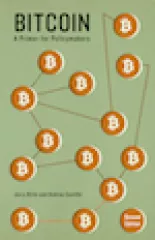On August 6, Judge Magistrate Amos Maazant of U.S. District Court for the Eastern District of Texas made many a headline when he became the first known United States government official to declare that Bitcoin-the non-government and non-bank currency, payments network, and anarchic digital phenomenon-is indeed money. In a ruling rejecting a defense argument that a certain Ponzi scheme was not in fact a Ponzi scheme because its shares were sold in Bitcoins, instead of "real" money, Maazant made this declaration: "Bitcoin is a currency or form of money, and investors wishing to invest in [the scheme] provided an investment of money."
This article appears in the December edition of Reason Magazine
On August 6, Judge Magistrate Amos Maazant of U.S. District Court for the Eastern District of Texas made many a headline when he became the first known United States government official to declare that Bitcoin-the non-government and non-bank currency, payments network, and anarchic digital phenomenon-is indeed money. In a ruling rejecting a defense argument that a certain Ponzi scheme was not in fact a Ponzi scheme because its shares were sold in Bitcoins, instead of "real" money, Maazant made this declaration: "Bitcoin is a currency or form of money, and investors wishing to invest in [the scheme] provided an investment of money."
The following week, the German Ministry of Finance also formally recognized Bitcoins as a private money. Germans can now use Bitcoins to buy bratwurst, sell lederhosen, or invest in Volkswagen. The government is developing rules to ensure Bitcoin transactions are taxed, just like those in euros.
So governments are slowly acknowledging the obvious: Bitcoins are money. But bureaucrats, like many observers since the digital currency burst on the scene in January 2009, are likely missing the larger implications. Bitcoin is much, much more than just money.
At its core, Bitcoin is a completely decentralized ledger system. It can be thought of as a massive online version of an accountant's book in which transactions are recorded by deducting from one account and adding to another. An accountant's ledger can be used to keep track not just of dollars, but also cows or bushels of corn or anything else, and Bitcoin is just as flexible. That means it can serve as the backbone for any online transaction that relies on a ledger, such as property registration, futures swapping, and bonded contracts. Because Bitcoin is decentralized, these applications can exist largely outside regulators' reach. And because Bitcoin is growing in popularity, financial regulators are beginning to make plans for dealing with it, much to the chagrin of those who see the private currency as a revolutionary force inherently unmanageable by statist forces.
The Mysterious Rise of Bitcoin
The Bitcoin concept was introduced in a remarkable academic paper published online in late 2008 by someone calling himself Satoshi Nakamoto. (So far, Nakamoto's true identity remains a mystery despite the attempts of several investigative reporters to uncover it.) The paper described a cryptographic breakthrough that for the first time made possible "a purely peer-to-peer version of electronic cash [allowing] online payments to be sent directly from one party to another without going through a financial institution."
In early 2009, Nakamoto released open-source software implementing the concept and launching the Bitcoin peer-to-peer network. After the launch, volunteer programmers from around the world began to work with Nakamoto to further develop the underlying software protocol, collaborating via email, forums, and chats. Nakamoto remained an active participant through mid-2010, when he turned over control of the project to a contributor named Gavin Andresen. In April 2011, when asked by a developer to explain his declining involvement, Nakamoto said that he had "moved on to other things." He hasn't been heard from since.
The mystery of Bitcoin's designer is fascinating, but the fact that we don't really know where Bitcoin came from does not undermine its security or stability. The Bitcoin protocol and software are completely open-source, open to inspection by anyone. Hundreds of programmers and cryptographers have pored over the code's thousands of lines, and volunteers are continuously adding innovations. By now most Bitcoin code has been written by people other than Nakamoto.
At first, Bitcoin attracted interest mostly from a small group of cryptographers and technology enthusiasts who casually traded the currency back and forth and even gave some away to attract new users. The currency's early value was commonly in the pennies. The first known Bitcoin purchase took place in May 2010, when one user paid another 10,000 Bitcoins for two pizzas. That sum would be worth around $1.2 million at today's exchange rate.
Merchants ranging from bars and restaurants to online specialty retailers began to accept Bitcoin for payment in 2010. Now businesses as big as WordPress, Reddit, and OKCupid accept the stuff. The most popular use of Bitcoin today is in online gambling at sites such as SatoshiDice.com.
As demand grew and the marketplace expanded, so did the exchange rate. Before settling at a relatively stable price of about $120 per Bitcoin over the last few months, Bitcoin experienced several bubbles and crashes. It reached an all-time high of $266 in April 2013-an increase of more than 1,000 percent over the previous three months-and then dropped to $105 before turning back up. Each bubble has largely been driven by media attention, which attracts new users and thus new demand. At some point in these cycles of publicity, a critical mass of speculators cashes out, sending the currency tumbling.
Such volatility is not surprising. The total value of all outstanding Bitcoins is still relatively low-about $1.5 billion. This means even a small increase in interest in Bitcoin can send prices soaring. Additionally, a large portion of existing Bitcoins are for the moment being held as a long-term investment, so the market is not very liquid. As more and more people begin to use them for everyday purchases, the exchange rate will likely increase.
